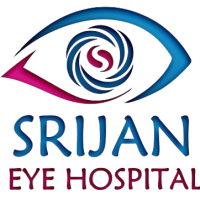Age-related macular degeneration (AMD) is a progressive eye condition that affects millions of people worldwide, particularly those aged 50 and older. It is the leading cause of severe vision loss and blindness among older adults.
Overview of Age-Related Macular Degeneration (AMD)
Age-related macular degeneration (AMD) is a chronic eye disease that affects the macula, the central part of the retina responsible for sharp, central vision. It is characterized by the gradual breakdown of the macular tissue, leading to irreversible vision loss. AMD can significantly impact an individual’s ability to perform daily tasks such as reading, driving, and recognizing faces.
Types of Age-Related Macular Degeneration
AMD can be classified into two main types:
Dry AMD (non-neovascular AMD) is the most common form and accounts for approximately 85-90% of cases. It is characterized by the presence of drusen, small yellow deposits that accumulate beneath the retina.
Wet AMD (also known as neovascular AMD) is less common but more severe. It occurs when abnormal blood vessels grow beneath the retina and leak fluid or blood, leading to rapid vision loss if left untreated.
Risk Factors for Age-Related Macular Degeneration
Several factors increase the risk of developing AMD, including age, genetics, smoking, obesity, hypertension, and a diet low in antioxidants and omega-3 fatty acids.
Individuals with a family history of AMD or certain genetic variants, such as the complement factor H (CFH) and age-related maculopathy susceptibility 2 (ARMS2) genes, are at higher risk. Smoking is considered the most significant modifiable risk factor for AMD, as it can double or triple the risk of developing the disease.
Symptoms and Signs of Age-Related Macular Degeneration
AMD can cause gradual or sudden changes in vision, including blurry or distorted central vision, difficulty reading or recognizing faces, and the appearance of dark or empty areas in the central visual field, known as scotomas.
Other symptoms may include decreased contrast sensitivity, changes in color perception, and difficulty adapting to changes in lighting conditions. It is essential to recognize these symptoms promptly and seek medical attention for a comprehensive eye examination.
Treatment Options for Age-Related Macular Degeneration
While there is currently no cure for AMD, several treatment options are available to slow disease progression and manage symptoms. In dry AMD, treatment focuses on lifestyle interventions such as quitting smoking, maintaining a healthy diet rich in antioxidants and omega-3 fatty acids, and taking dietary supplements like vitamins C, E, zinc, and copper.
In wet AMD, treatment may include anti-VEGF injections, which help reduce abnormal blood vessel growth and leakage, photodynamic therapy, and laser therapy. Vision rehabilitation programs can also help individuals with AMD maximize their remaining vision and adapt to changes in visual function.
Age-related macular degeneration is a common and potentially devastating eye disease that affects millions of people worldwide.
By recognizing the risk factors for AMD, adopting a healthy lifestyle, and seeking regular eye examinations, individuals can take proactive steps to reduce their risk of developing this sight-threatening condition.




